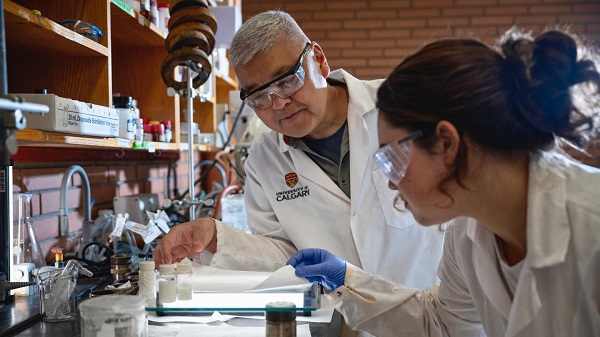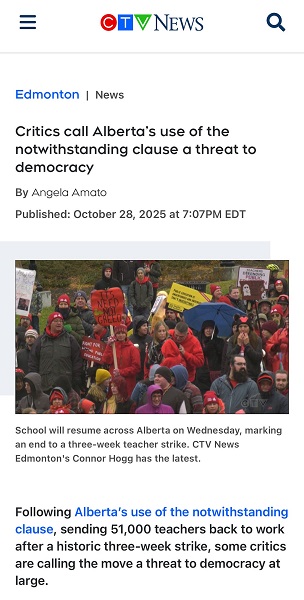Alberta
Province will begin to ease restrictions at long term care homes

Relaxing restrictions on continuing care visits
High rates of vaccination among residents and staff at continuing care facilities means families will soon be able to more easily visit their loved ones.
Starting May 10, updated public health measures will come into effect for continuing care facilities in Alberta. These protocols will increase the number of designated family/support persons for each resident, expand the number of people who can attend outdoor social visits and allow limited indoor social gatherings.
Active cases in long-term care have declined from the peak of 831 on Dec. 27 to 44 as of April 24. Hospitalizations have decreased by 93 per cent and fatalities due to COVID-19 have declined by 94 per cent.
“Long-term care residents need joy, hope, and connection just like everyone else. They have shouldered the burden of this pandemic and sacrificed important time with their loved ones and I’m glad that we are able to ease these restrictions, but we will continue to move cautiously, as evidence is still emerging on vaccines and their ability to both protect residents from variants and limit transmitting the virus to others.”
“We know the ability to connect in-person with loved ones is important. Alberta was one of the few provinces that still allowed visitors in continuing care facilities even during the most difficult points throughout the pandemic, because we understand how important seeing loved ones is. We continue to work to strike a balance between protecting residents from infection and sustaining their overall health and well-being.”
“We have worked closely with family, residents and operators on the best way to move forward with changes. Based on the feedback of those most impacted, the available data and the power of vaccines, we are striking the right balance between protecting residents and staff from COVID-19 and enabling their quality of life.”
In April, town halls were held with continuing care operators, residents and staff to discuss the impact of vaccinations and concerns over COVID-19 variants. The majority of participants indicated that they were ready for eased restrictions but wanted some safety measures to remain.
Starting May 10, the following changes to visitation policy will take effect:
- Where possible, and provided the majority of residents agree, indoor social visits with up to four visitors will be able to resume again, as long as they are from the same household and distancing, masking and other health measures remain in place.
- Outdoor social visits in these facilities can expand to up to 10 people, including the resident. This is double the current limit of five and brings the limit in line with the current outdoor limit for the rest of the province.
- Residents may name up to four designated family/support persons for unrestricted access, and visitors will continue to be able to visit when residents are approaching the end of their lives or suffer a change in health status.
These changes are not mandatory and will vary by site based on the design of the building, wishes of residents and other factors.
Each site must develop their own visiting approach that falls within the guidelines set out in the order and reflects the risk tolerance of the residents who live at that site.
All other COVID-19 measures remain in place, including:
- Mandatory order restricting staff from working at more than one designated supportive living or long-term care facility to help prevent the spread of illness between facilities.
- Symptom and exposure checks for all who are entering a continuing care facility.
- Continuous masking and distancing during indoor visits.
As Alberta’s vaccination program expands and community transmission lowers, consideration will be given to easing additional restrictions.
Alberta’s government is responding to the COVID-19 pandemic by protecting lives and livelihoods with precise measures to bend the curve, sustain small businesses and protect Alberta’s health-care system.
Alberta
From Underdog to Top Broodmare

WATCH From Underdog to Top Broodmare (video)
Executive Producers Jeff Robillard (Horse Racing Alberta) and Mike Little (Shinelight Entertainment)
What began as an underdog story became a legacy of excellence. Crackers Hot Shot didn’t just race — she paved the way for future generations, and in doing so became one of the most influential producers the province has known.
The extraordinary journey of Crackers Hot Shot — once overlooked, now revered — stands as one of Alberta’s finest success stories in harness racing and breeding.
Born in humble circumstances and initially considered rough around the edges, Crackers Hot Shot overcame long odds to carve out a career that would forever impact the province’s racing industry. From a “wild, unhandled filly” to Alberta’s “Horse of the Year” in 2013, to producing foals who carry her spirit and fortitude into future generations.
Her influence ripples through Alberta’s racing and breeding landscape: from how young stock are prepared, to the aspirations of local breeders who now look to “the mare that did it” as proof that world-class talent can emerge from Alberta’s paddocks.
“Crackers Hot Shot, she had a tough start. She wasn’t much to look at when we first got her” — Rod Starkewski
“Crackers Hot Shot was left on her own – Carl Archibald heard us talking, he said ‘I’ll go get her – I live by there’. I think it took him 3 days to dig her out of the snow. She was completely wild – then we just started working on her. She really needed some humans to work with her – and get to know that people are not scary.” — Jackie Starkewski
“Crackers Hot Shot would be one of the top broodmares in Albeta percentage wise if nothing else. Her foals hit the track – they’re looking for the winners circle every time.” — Connie Kolthammer
Visit thehorses.com to learn more about Alberta’s Horse Racing industry.
Alberta
Province orders School Boards to gather data on class sizes and complexity by Nov 24

Better data, better outcomes for Alberta students |
To help schools address classroom complexity, Alberta’s government will begin collecting annual data on class size and composition.
Over the past three years, Alberta has welcomed more than 80,000 new students. With this unprecedented growth, classroom complexity and class sizes are among the biggest issues facing schools and teachers across the province.
To meet this challenge head on, Alberta’s government will work with school boards to gather yearly data on class sizes and composition. This information will be used to better understand staffing, student needs and classroom complexity. School boards will be required to submit data on Alberta classrooms by Nov. 24, and by January, this data will be made publicly available and will then be released annually.
Data collected on classroom complexity will help the province understand and address issues in schools, including class sizes, and support strategic investments in classrooms. Over the next three years, school boards will be provided with funding to hire 3,000 teachers and 1,500 new education assistants to support students with complex needs.
“We are ready to work with school boards and teachers to address classroom complexity and class sizes. We have heard them loud and clear and we are taking bold action to address these issues.”
Alberta’s government is establishing a Class Size and Complexity Task Force to begin work immediately on identifying solutions to the challenges facing Alberta classrooms. Alongside new annual data collection, the task force will ensure every student gets the attention and support they need to succeed. Details about the task force will be shared in the coming weeks.
“This data will provide essential insight into classroom realities, guiding evidence-based decisions and advocating for sustainable funding to address complexity, ensuring every student and educator in Alberta has the support to thrive.”
Quick facts
To inform decisions on addressing classroom complexity, data will be collected on total numbers of:
- all staff, per school, including roles
- substitute teachers
- district staff, listed by job title
- students, per classroom, per school
- severe, mild/moderate, and gifted/talented students, per classroom, per school
- English as an additional language (EAL) students, per classroom, per school
- refugee students, per classroom, per school
- First Nations, Métis and Inuit students, per classroom, per school
- Individualized Program Plans, per classroom, per school
- students waitlisted for assessment, per classroom, per school
- incidents of aggression and violence
- $55 million was provided in Budget 2025 to address classroom complexity.
- 8.6 billion is being invested to build and renovate more than 130 schools across the province.
- Budget 2025 is investing $1.6 billion in learning support funding to help meet students’ specialized learning needs.
- Budget 2025 is investing $1.1 billion to hire more than 4,000 teachers and educational staff.
-

 Alberta12 hours ago
Alberta12 hours agoFrom Underdog to Top Broodmare
-

 Alberta2 days ago
Alberta2 days agoNobel Prize nods to Alberta innovation in carbon capture
-

 Business1 day ago
Business1 day agoCanada’s attack on religious charities makes no fiscal sense
-

 International23 hours ago
International23 hours agoPrince Andrew banished from the British monarchy
-

 Business23 hours ago
Business23 hours ago“We have a deal”: Trump, Xi strike breakthrough on trade and fentanyl
-

 MxM News2 days ago
MxM News2 days agoTrump ‘Grateful’ For Bill Gates Pivot, Declares Victory Over ‘Climate Change Hoax’
-

 Crime23 hours ago
Crime23 hours agoCanada Seizes 4,300 Litres of Chinese Drug Precursors Amid Trump’s Tariff Pressure Over Fentanyl Flows
-

 Alberta22 hours ago
Alberta22 hours agoHow one major media torqued its coverage – in the take no prisoners words of a former Alberta premier







